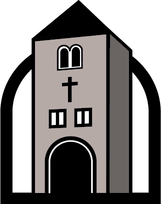| dc.contributor.author | Prange, Peter M. | |
| dc.date.accessioned | 2015-08-23T19:41:07Z | |
| dc.date.available | 2015-08-23T19:41:07Z | |
| dc.date.issued | 2013 | |
| dc.identifier.uri | http://hdl.handle.net/123456789/4081 | |
| dc.description | This is part 2 of this essay in 4 parts presented in successive issues of Wisconsin Lutheran Quarterly. | en_US |
| dc.description.abstract | Pastor Prange brings a new look to the historical period of time that may have been the “golden age” of exegetical thought and development within the Wisconsin Synod. Here is a highlight that captures the spirit of the essay: “[J. P.] Koehler and his seminary colleagues, August Pieper andJohn Schaller, would propose, promote, and put into practice was a determined emphasis upon the historical disciplines of biblical exegesis and history in an effort to elude theological lethargy. The approach of these Wauwatosa theologians between 1900-1920 appeared to be new within the context of Midwestern Lutheranism, but in truth these men were simply following in the footsteps of Martin Luther and applying principles set forth in the days of the Lutheran Reformation.” (110:1 p.9) [Intro from part I] | en_US |
| dc.language.iso | en_US | en_US |
| dc.subject | J.P. (Johann Philipp) Koehler | en_US |
| dc.subject | August Pieper | en_US |
| dc.subject | John Schaller | en_US |
| dc.subject | Wauwatosa Theology | en_US |
| dc.title | The Wauwatosa Spring II: The Flowering of the Historical Disciplines At Wisconsin Lutheran Seminary | en_US |
| dc.type | Article | en_US |
